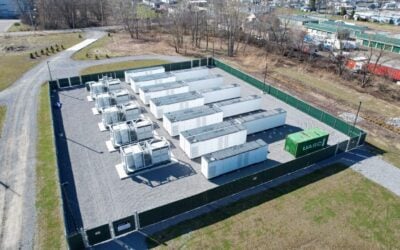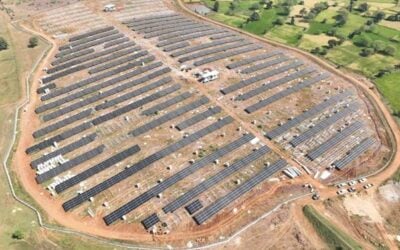
California has proved energy storage is both effective and cost-effective as a capacity resource, leading to one utility being instructed to hold competitive solicitations for energy storage, the head of the California Energy Storage Alliance (CESA) has said.
On 11 January, the state regulator, the California Public Utilities’ Commission (CPUC) issued Resolution E-4909, which authorised Pacific Gas & Electric (PG&E), one of California’s three main investor-owned utilities (IOUs), to “procure energy storage or preferred resources to address local deficiencies and ensure local reliability”.
In other words, three local specific sub-areas of PG&E’s service area have been identified as locations where the utility is now authorised by the Commission to hold competitive solicitations for energy storage and other preferred resources.
The idea is that expensive capacity contracts, often paid out to natural gas plants which will only run part-time as needed to balance supply with demand on the grid, will not be needed and instead lower cost energy storage projects could be deployed. The resources will have to ensure the required generation capacity is available and to manage voltage issues.
Try Premium for just $1
- Full premium access for the first month at only $1
- Converts to an annual rate after 30 days unless cancelled
- Cancel anytime during the trial period
Premium Benefits
- Expert industry analysis and interviews
- Digital access to PV Tech Power journal
- Exclusive event discounts
Or get the full Premium subscription right away
Or continue reading this article for free
Essentially, while many of the economic and technical considerations around the authorisation are particular to California’s market design and regulation, what has happened is that four natural gas peaker plants owned by power generation company Calpine are considered no longer economic to run at Resource Adequacy and energy capacity prices. Two of those plants are still considered necessary to meet local capacity needs while another is needed to regulate voltage.
Calpine complained that the cost and time need for planning and executing upgrades to the three plants under existing rules would be prohibitive, while the Commission was concerned that creating new reliability must-run resource (RMR) rulings would likewise take too long and could run over budget.
Janice Lin, head of the California Energy Storage Alliance (CESA) trade group and a consultancy expert with Stratagen Consulting, told Energy-Storage.News that the ruling follows naturally from several recent developments in California’s energy market.
“Energy storage is an effective capacity resource,” Lin said.
“This was demonstrated following Southern California Edison’s 2013 local capacity requirement procurement that resulted in 261MW of energy storage being procured from among a wide range of alternative resources, including traditional forms of generation.”
Also important was the wake of the Aliso Canyon gas leak in California, which led to the expedited emergency procurement of around 100MW of energy storage, most of it four-hours duration, “to help alleviate electric reliability concerns in the LA Basin resulting from the gas leak”, Janice Lin said.
Janice Lin explained that energy storage can remove the need for natural gas plants, in particular peaker plants.
“Generally, energy storage’s ability to ‘replace natural gas as a capacity resource’ depends on the application – is the natural gas being used for a peaking resource and only needed a few hours a day or is it being used as more of a baseload resource running 24/7 throughout the year? Depending on the application, energy storage (battery storage and many other energy storage technologies) can be a cost effective alternative.”
While baseload power is some way off from being replaced by energy storage and associated distributed energy resources such as solar PV, Lin said energy storage can “be an effective companion” to baseload, absorbing fluctuations in demand to increase the overall efficiency and effectiveness of resources.
PG&E has been allowed to recover costs of energy storage deployments under the new ruling through its Cost Allocation Mechanism, paid for by all “benefiting ratepayers”, while the utility must work closely with grid operator CAISO to ensure projects provide meaningful capacities and levels of utilisation and meet the needs of the network in various other ways.
Energy-Storage.News has reported in the past on the potential of energy storage to displace peaker plants as a sort of ‘first rung’ on a ladder of decarbonisation. A 2014 study by grid-scale energy consultancy Energy Strategies Group (ESG) pitted peaker plants against flow batteries from US manufacturer VIZn Energy. Study author Chet Lyons said the batteries were “an economically attractive substitute for many simple cycle gas-fired combustion turbine peaking plants, especially when deployed on a distributed basis and owned and operated by the electric utility”. in 2015, Jim Robo, CEO of NextEra Energy said that he could envisage a time, possibly as soon as the year 2020, when the US would no longer need to build peaker plants due to the rise of energy storage.





